Understanding the Diamond Color Scale: Insights and Implications
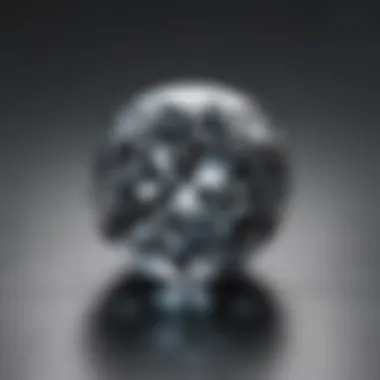
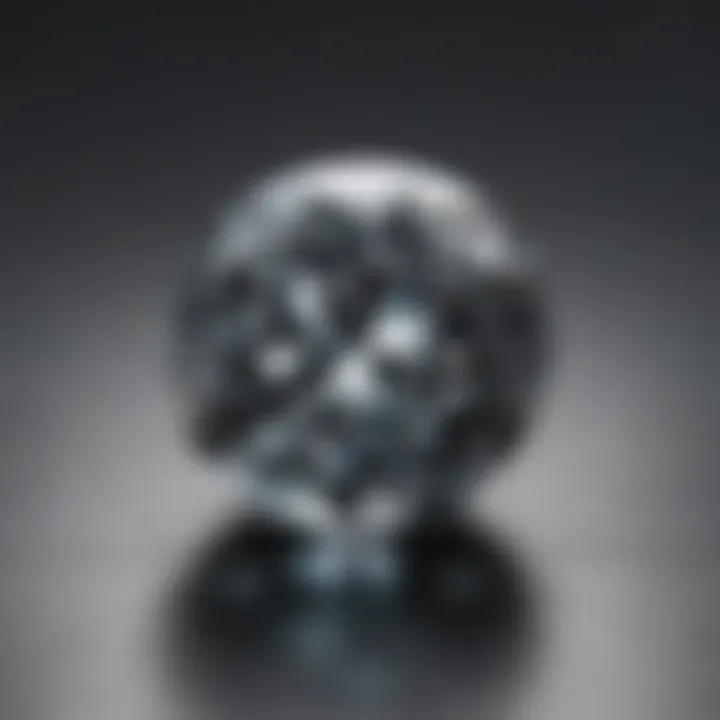
Intro
The world of gemstones can often feel like a treasure trove, filled with stunning beauty and a plethora of choices. Among these, diamonds stand out due to their rarity and allure. But beyond that brilliant sparkle lies an intricate system that defines their value: the diamond color scale.
Understanding this scale isn't just for jewelers and appraisers; it's essential for anyone interested in purchasing or appreciating diamonds. By grasping the nuances of color grading, gemstone enthusiasts can make informed decisions. This section will break down the various elements surrounding diamonds, including their properties and the historical context that has shaped the cultural significance of these gems.
Gemstone Overview
Definition and Origins
Diamonds are crystallized carbon structures, formed deep within the Earth's mantle under extreme pressure and temperature over billions of years. Their formation process is akin to nature's alchemy, turning ordinary carbon into something extraordinary. The term "diamond" comes from the ancient Greek word "adamas," which means invincible or untameable, perfectly encapsulating their hardness and unmatched durability.
Historical Significance
Throughout history, diamonds have been revered, symbolizing wealth, power, and love. From the ancient Indians, who first discovered diamond deposits around 4000 years ago, to European royalty in the Middle Ages who adorned crowns with these exquisite stones, their significance has evolved. In modern times, the engagement ring tradition highlights diamonds' role as symbols of enduring love.
Gemstone Properties
Hardness and Durability
Diamonds are renowned for their hardness, being the hardest known natural material. They score a perfect 10 on the Mohs scale, reflecting their superior resistance to scratching. This durability makes them not only desirable for jewelry but also useful in industrial applications, including cutting and grinding tools.
- Key Points on Hardness:
- Resistant to scratches and wear
- Maintains brilliance for a lifetime
- Essential for high-quality jewelry
Color and Clarity
When discussing diamonds, color and clarity are two of the most critical factors affecting their appeal and value. The diamond color scale ranges from D (colorless) to Z (light yellow). The lesser the color, the more valuable the diamond tends to be, akin to the most delicate shades of light catching the facets. Clarity refers to the presence of inclusions or blemishes; a flawless diamond is quite rare and commands a premium in the market.
"The beauty of a diamond is often magnified by its color and clarity, creating a perfect harmony that captures the light in mesmerizing ways."
An appreciation of these properties not only enhances your understanding of diamonds but also your ability to choose wisely in the beautiful world of gemstone jewelry.
Foreword to Diamond Color
When it comes to diamonds, one might think their value lies solely in clarity or carat weight. However, color plays a pivotal role in a diamond's allure and market price. The subtle nuances of color in diamonds can make a tremendous difference in how they're perceived by buyers and the general public. Grasping the intricacies of diamond color not only enhances appreciation but also lets purchasers make informed choices that align with their style and investment needs.
Diamonds are traditionally viewed through the lens of the GIA grading scale, where color varies from D (colorless) to Z (light yellow or brown). Understanding what these letters signify goes beyond memorizing a chart; it's about knowing how these grades can affect everything from the elegance of a piece to its resale value. For gemstone enthusiasts, collectors, and jewelry designers, navigating this is essential for curating authentic experiences and ensuring satisfaction with their investments.
The Role of Color in Diamonds
Color is more than a mere aesthetic attribute; it serves as a defining characteristic that influences desirability and value. A diamond's color is primarily a result of its chemical composition. For instance, traces of nitrogen can lend a yellow hue, while boron might impart a blue tint. Thus, a diamond's color can act as a window into its history and formation, adding layers of narrative to its beauty.
Furthermore, personal taste and societal trends heavily dictate color preferences. Some buyers may gravitate towards the classic, icy brilliance of colorless diamonds, while others may find fascinating beauty in lighter shades or even deeply colored fancy diamonds. This variation in preference is essential, as it shapes market dynamics and paves the path for future trends in diamond purchasing.
Overview of the Color Scale
The diamond color grading scale, developed by the Gemological Institute of America (GIA), is universally recognized and serves as a benchmark for both dealers and consumers alike. The scale ranges from D to Z, with each letter representing a spectrum of color intensity and hue.
- D: Absolutely colorless and the highest quality.
- E-F: Colorless, with slight traces detectable by gemologists.
- G-H: Near colorless, showing minimal hue to the untrained eye.
- I-J: Mostly colorless, with a hint of color visible when viewed from the side.
- K-Z: Increasing color concentration; diamonds in this range typically show noticeable yellow or brown tones.
In addition to this grading scale, there are also fancy color diamonds, which do not fall within the D-Z range and are graded by hue, tone, and saturation. These diamonds come in an incredible variety of colors including pink, blue, green, and even black. Understanding the color scale can greatly assist prospective buyers in discerning quality and making educated decisions during their gemstone journey.
The GIA Grading System
The GIA grading system serves as a critical backbone in the assessment of diamond color, guiding both jewelers and consumers through the often murky waters of gemstone valuation. The Gemological Institute of America (GIA) is globally recognized for its rigorous standards and precise methodologies, establishing a universal language for diamond quality that transcends borders and cultures. Understanding this grading system will aid gemstone enthusiasts in making informed purchases while also ensuring a level of trust in the product they are investing in.
Understanding GIA Standards
The GIA has set forth a comprehensive framework for grading diamonds, focusing primarily on the Four Cs: Cut, Color, Clarity, and Carat Weight. Among these, color is considered one of the most influencing factors when it comes to a diamond’s value. The GIA color grading scale runs from D to Z, with D being colorless and Z showcasing more noticeable shades. This clear system helps demystify what could otherwise be subjective assessments. By utilizing standardized criteria, the GIA ensures that both buyers and sellers have a mutual understanding of what they are discussing, reducing the chances of miscommunication or deception in the marketplace.
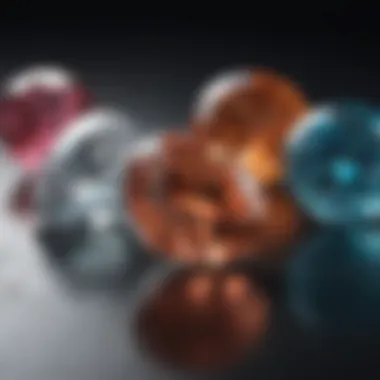
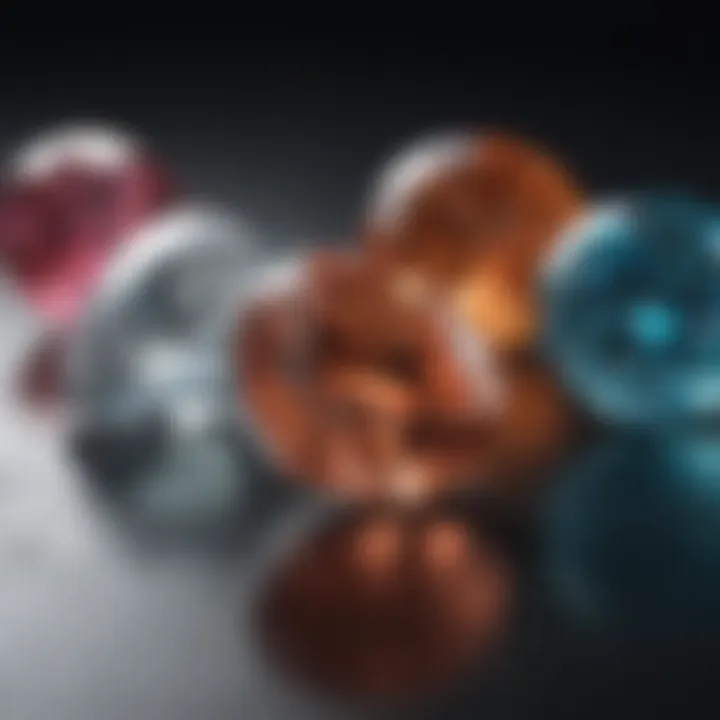
How Grading Works
The GIA employs a systematic grading process that is designed to provide fair and accurate evaluations of diamond color. Here we will break down the grading process into three key aspects: color classification, visual assessment, and advanced tools and techniques.
Color Classification
Color classification is a vital component of the GIA grading system. It defines the range of color that a diamond can possess and where it falls on the scale from D to Z. D-colored diamonds are prized for their scarcity and visual appeal. Conversely, diamonds graded as Z reveal a notable presence of color, which some people might find visually pleasing, particularly when set in different types of jewelry.
The unique aspect of this classification is its ability to cater to personal preferences while still maintaining objectivity. The benefit of having a color classification system lies in its clarity; buyers know exactly what they're getting. However, a potential downside is that some individuals might overemphasize color categories over other traits, like clarity or cut.
Visual Assessment
Visual assessment is where the art meets science in diamond grading. Assessors use controlled lighting conditions and specific backdrops to scrutinize the diamond’s hue. This method allows for a nuanced view of the gemstone, making way for what some would call the "real-world" perception of color.
A key characteristic of visual assessment is its reliance on human judgment, which introduces variability. While this can often lead to a more realistic understanding of how a diamond will appear in everyday situations, it also risks inconsistency. The advantage here is the ability to consider subtle tones and shades that tools can't always quantify; yet, the reliance on human observation means that biases can creep in.
Advanced Tools and Techniques
In today's high-tech world, the GIA doesn't shy away from utilizing advanced tools and techniques to support its grading processes. Instruments like spectrometers and colorimeters provide precise measurements of a diamond's optical properties, rendering a more exact assessment than human eyes alone can achieve.
This scientific approach bolsters the reliability of the grading process. The principal advantage of utilizing these tools lies in their ability to render repeatable and verifiable results, enhancing trust in the evaluations. On the downside, the complexity and cost of these instruments may limit their accessibility for all gemologists, potentially creating disparities in grading consistency across different sectors of the industry.
"A diamond’s color might be key, but it's the method of grading that brings clarity to its true value."
The GIA grading system is a sophisticated fusion of traditional assessment and modern technology. As such, it sets reputable standards, allowing gem enthusiasts to engage confidently in their gemstone journey. Familiarizing oneself with this system not only enriches the buyer's experience but also empowers collectors and jewelry designers alike in navigating the colorful world of diamonds.
Color Ranges and Descriptions
Understanding the variations in diamond color is crucial for anyone serious about gemstones. The color ranges play a significant part in not only the aesthetic allure of a diamond but also its market value. By grasping the different color categorizations and their respective traits, collectors, jewelers, and buyers can wield better knowledge during transactions. Furthermore, recognizing these distinctions can enhance one’s appreciation of a diamond, allowing for a deeper emotional and financial connection.
The to Z Scale
Diamonds are usually graded along a scale that ranges from D to Z, where D is deemed the most colorless, and Z contains noticeable color. This scale informs jewelers, buyers, and enthusiasts about the basic quality of a diamond's color.
Characteristics of D-colored Diamonds
D-colored diamonds represent the pinnacle of clarity and purity in the color grading scale. Their rarity stems from being exceptionally transparent and devoid of any hue. This characteristic interprets not only exquisite beauty but also solidifies D diamonds as a valuable asset. Their inherent colorlessness allows the brilliant facets of the diamond to initiate a spectrum of light, creating a fire that is both captivating and desirable. In essence, their untainted nature makes them a popular choice among buyers seeking investment-grade stones.
However, one must keep in mind that D-colored diamonds often carry a hefty price tag due to their scarcity. This can be a double-edged sword; while they promise a sense of prestige, they may not always fit certain budgets.
Characteristics of Z-colored Diamonds
Z-colored diamonds, on the other hand, present a stark contrast to their D counterparts. They exhibit discernible shades, ranging from light yellow to brown, which can often discourage some buyers. Yet, there’s a unique charm to these stones. Their key characteristic is their distinctive tint, which can make them an appealing option for those looking for a more budget-friendly diamond that holds character and individuality.
Moreover, Z-colored diamonds can be customized or featured in various jewelry designs where a hint of color is welcomed. This could often be viewed as an advantage since they can serve as an intriguing focal point. However, they're generally perceived as less valuable than D diamonds, which can affect long-term investment considerations.
Beyond Z: Fancy Color Diamonds
Fancy color diamonds step outside the traditional D to Z grading scale, venturing into a world of vibrant hues. This segment of diamonds presents unique opportunities for enthusiasts and collectors. Their beauty lies in diversification; they can range from vivacious pinks to deep blues, each carrying its own story and rarity.
Understanding Fancy Colors
Fancy color diamonds are graded based on three primary factors: hue, tone, and saturation. The most captivating aspect is their ability to reflect the spectrum of colors, which can range from subtle pastels to vivid primary tones. This vibrant characteristic makes them sought after in both fashion and investment markets. Collectors often pursue these diamonds due to their potential for appreciation in value over time.
Additionally, these diamonds can transform a piece of jewelry from ordinary to extraordinary. Their colorful presentation offers a more personal touch that can represent one's individuality. The downside, however, is that fancy diamonds often command premium prices as their popularity can lead to substantial market fluctuations.
Grading Fancy Color Diamonds
The grading of fancy color diamonds diverges from the typical D-Z scale. Instead, the grading process evaluates the nuances of color based on the intensity of the hue and its overall appearance. This process adds a layer of complexity, underscoring the importance of expertise in discerning the quality of these diamonds. Their unique grading standards dictate that not every colored diamond will hold the same value, leading to potential confusion for buyers.
A primary advantage to this grading system is that it allows for deeper appreciation and understanding of each diamond's individuality. However, the intricate nature of grading them might sometimes confuse even the most seasoned enthusiasts. Keeping track of market values in this realm can feel like trying to catch smoke with your bare hands, yet for many, the allure is irrefutable.
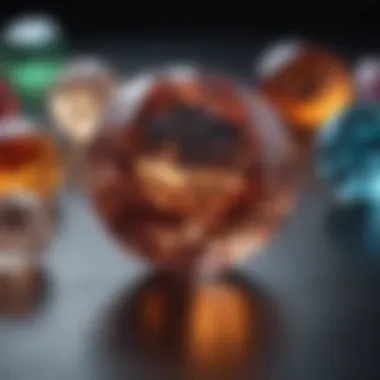
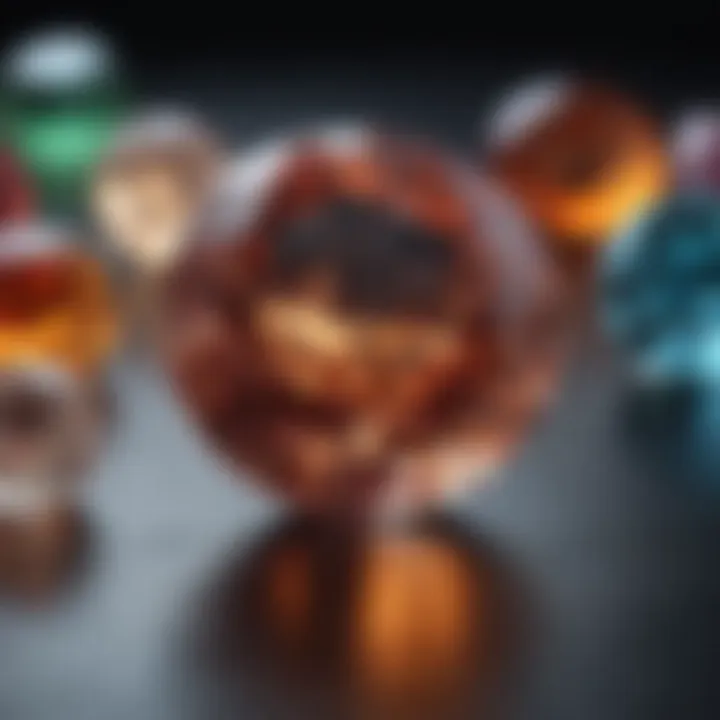
"Understanding these nuances can elevate anyone's experience in the world of diamonds. Different colors tell different stories. "
The deep dive into both the GIA grading system and the unique characteristics of diamonds ultimately fosters a crystal-clear picture for anyone looking to navigate the diamond market. Recognizing these color ranges lets individuals make informed choices tailored to personal taste and value considerations.
Factors Influencing Perception of Color
Understanding the factors that influence color perception in diamonds is essential for both buyers and enthusiasts. Color isn’t just an element of beauty; it plays a pivotal role in how diamonds are graded and valued. The perception of a diamond's color can vary significantly based on external conditions. This makes it vital to consider various elements that could affect how a diamond's hue is viewed.
This section delves into two significant contributors to color perception: lighting conditions and surrounding materials. Both significantly impact how a diamond's color appears to the naked eye. Knowing these can help individuals make better decisions during purchasing and can also enhance the appreciation of the gems they already own.
Lighting Conditions
The type of lighting under which a diamond is analyzed can drastically change its appearance. Natural daylight is often considered the ideal condition for evaluating a diamond’s color as it presents an unfiltered view. In contrast, artificial lighting can cast various shades onto the diamond, making it appear either more yellow or more colorless depending on the light's color temperature.
Here’s a simple breakdown of how different light sources can affect color perception:
- Sunlight: Provides the most accurate representation.
- Incandescent Bulbs: Typically emit a warm light that might enhance yellow tones.
- Fluorescent Lights: These can give diamonds a bluish tinge, potentially masking the actual color.
- LED Lights: Similar to fluorescent lights, they can introduce bias in color perception.
This variation in appearance means that buyers should examine diamonds under multiple lighting conditions before making a decision. By doing so, they can achieve a more rounded understanding of the diamond’s true color.
Surrounding Materials
The environment surrounding a diamond also plays a crucial role in how its color is perceived. Different backgrounds can highlight or diminish the diamond's natural hue. For instance, a diamond set against a black background may appear more colorless compared to when it's placed on a white surface. This is due to visual contrast, which can trick the eye into believing there’s more color than there actually is.
Some key points to consider:
- Color of the Mounting: A yellow gold setting might make a near-colorless diamond seem whiter and more brilliant, while a white gold or platinum setting may showcase the diamond's actual color more accurately.
- Other Nearby Gemstones: A colorful gemstone can lead to reflections that change how light interacts with a diamond, resulting in different perceptions of its hue.
In essence, both lighting and surrounding materials must be taken into account to fully grasp a diamond's color. Engaging with this aspect can not only refine buying choices but also enrich the experience of owning and displaying diamonds.
"The perception of color extends beyond the diamond itself, inviting an interplay of light and environment, making each viewing a unique experience."
By acknowledging how these factors play into color assessment, one can develop a sharper eye for recognizing the nuances that define a diamond's allure.
Impact of Color on Diamond Value
Understanding how color influences diamond value is crucial for anyone buying or investing in these gemstones. The diamond color scale dictates not just aesthetic preferences but also market demand and pricing. Each grade on the scale carries specific attributes that affect a diamond's desirability and worth. The difference between two grades can mean significant variance in price. Thus, knowing the implications of color grading can lead to more informed purchasing decisions and a deeper appreciation for the art of gemology.
Market Perceptions
Market perception plays a vital role in establishing the value of diamonds based on color. Many potential buyers look for diamonds that are either perfectly colorless or exhibit a unique hue. However, current trends often tilt toward preference for diamonds within certain ranges of the color scale. For instance, diamonds classified as G-H (near colorless) are often seen as valuable due to their balance of quality and cost.
- Consumer Trends: Trends can fluctuate, influenced by popular culture, celebrity endorsements, and advertising. New designs emerging from jewelry designers can spark interest in specific diamond colors, resulting in a ripple effect on market value.
- Rarity and Demand: Rarer colors, such as pink or blue diamonds, can command astronomical prices at auctions. The market often sets these prices not solely based on the diamond's features but on the perceived beauty and rarity.
"The color isn’t just a feature; it paints a story, a narrative that echoes through the marketplace."
This reality underscores the importance of understanding the color grading scale to comprehend why certain diamonds are priced higher than others.
Investment Considerations
When viewing diamonds as an investment, color grading should be top of mind. A diamond's color influences its liquidity--that is, how easily it can be sold and at what price. Investors may choose specific color grades with potential for future appreciation based on market trends.
- Long-Term Value: Many investors see potential in G-H colored diamonds due to their broad market appeal. As consumers search for quality at a reasonable price point, these diamonds often retain their value well over time.
- Fancy Color Diamonds: The world of investments doesn’t only categorize diamonds by the traditional color scale. Fancy color diamonds have entered as an alternative investment, attracting collectors and investors alike. Their unique hues can lead to remarkable appreciation rates.
- Market Timing: Just like any investment, timing is crucial. Understanding current market demands and collaborating with gemological experts can guide choices about which color grades to buy or sell.
Common Misconceptions About Diamond Color
When it comes to diamonds, many enthusiasts and buyers have their own set of beliefs, some of which can lead to misconceptions that have long been perpetuated. It's essential to clarify these misunderstandings because they can significantly influence purchasing decisions, preferences, and even the perceived value of diamonds.
Understanding the common misconceptions about diamond color can shed light on the broader context of diamond grading and valuation. By exploring this topic, we equip readers with knowledge that enables smarter decisions when buying or appreciating these gems. Misleading ideas can lead buyers astray, costing them both financial investment and personal satisfaction.
Color vs. Clarity
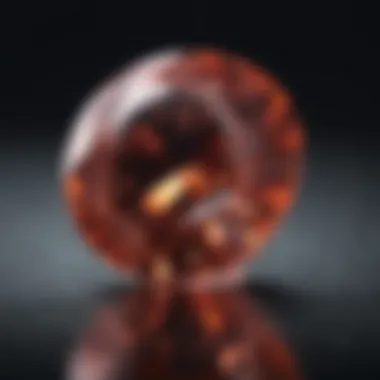
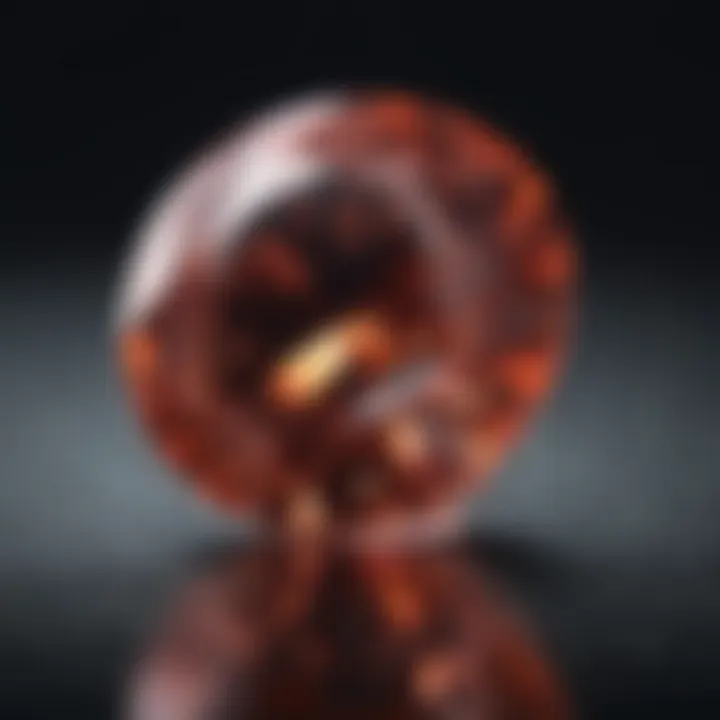
One prevalent misunderstanding is equating color with clarity. Many people think that a colorless diamond is superior because clarity seems to take a backseat in the conversation. However, clarity and color are distinct grading factors, each influencing the diamond’s overall beauty and value in its own way.
A diamond’s clarity refers to the absence of inclusions and blemishes. On the other hand, color evaluates the hue or tint present in the diamond. It's very possible for a diamond to have fantastic clarity but possess a noticeable tint, which can compromise its desirability.
Think about this: a flawless D-colored diamond commands a premium price due to its rarity and brilliance. However, a VVS clarity diamond with a slight yellow hue may be less desirable even if practically flawless. It’s essential for buyers to recognize that while clarity contributes to a stone’s allure, color can make or break its appeal in the eyes of many buyers.
To navigate the diamond market effectively, here are a few points to consider:
- Understand that color and clarity serve different roles in determining a diamond's overall aesthetic.
- Be open to evaluating diamonds that may not be completely colorless but offer excellent clarity.
- Conduct thorough research into grading systems to appreciate how they influence both color and clarity assessments.
The Myth of Colorless Preferences
Another common notion is that "colorless" diamonds are always the best choice. While it's true these diamonds have their charm and are marketed as the epitome of elegance, this preference isn't universal. Lighter shades, like faint yellow or even champagne tones, can have their own appeal and unique charm.
The reality is many buyers are drawn to colors that resonate more with their personal style or the symbolic meaning behind certain shades. For example, warm tones might evoke feelings of warmth and energy, while subtle colors may come across as classic and timeless. These preferences often depend on cultural context and individual taste, indicating that the blanket preference for colorless diamonds is a myth.
Consider these perspectives:
- Personal Preference: Individual tastes vary widely; some cherish vibrant, colorful stones more than anything else.
- Symbolic Associations: Certain colors hold particular significance in various cultures — those shades may be more desirable to specific individuals.
- Design Compatibility: Color can enhance the overall look of a piece of jewelry. Mix & match with settings or complementary stones may create a stunning piece.
Cultural Significance of Color in Diamonds
The cultural import of color within the realm of diamonds stretches far deeper than mere aesthetics. It intertwines with history, tradition, and even personal expression. Color is not just a trait of a diamond; it tells a story about its origin and the way societies interpret beauty and worth. Understanding this significance helps enthusiasts and collectors appreciate not just the stone itself, but also its context in human culture.
In various cultures, diamond colors can hold different meanings, often linked to beliefs and customs that have persisted over centuries. Some colors might evoke purity and innocence, while others resonate with power or desire. These perceptions affect how particular diamonds are valued not only financially but also sentimentally.
Each diamond carries potential narratives shaped by the surrounding societal attitudes. For instance, engaging with the cultural significance of diamond colors allows individuals to select stones that not only fit their tastes but also reflect their identities or aspirations. This renders the purchasing process not just a financial transaction but a personal and often emotional journey.
Cultural Variations in Color Perception
Color perception varies drastically from culture to culture. In Western societies, for instance, the color red often symbolizes love and passion, making red diamonds highly coveted as tokens of affection. Conversely, in some Asian cultures, white is linked to mourning. Therefore, a white diamond may not carry the same connotation of celebration as it would in the West.
Furthermore, certain colors may hold specialized significance in particular regions. Take, for example, the green diamonds. In some cultures, green symbolizes nature, fertility, and wealth. This perception can inflate the desirability of green diamonds, intertwining them with life’s important milestones.
Reflecting on these cultural nuances allows potential buyers to navigate beyond a mere preference for color. They can consider how their chosen hue might be perceived by others, especially in contexts like gifting, where the emotional weight of the stone is paramount.
Symbolism Associated with Diamond Colors
Diamonds come with built-in symbols that transcend their physical form. Each color presents unique narratives, amplifying their significance:
- Colorless Diamonds (D-F): Often associated with clarity and purity. They are the universal symbol of commitment, widely chosen for engagement or wedding rings.
- Yellow Diamonds: Represent optimism and warmth. They convey a sense of joy and are often seen as a playful alternative to traditional whites.
- Blue Diamonds: Revered for their rarity, blue symbolizes tranquility and peace. Their historical association with royalty enhances their allure, making them choices worthy of royals.
- Pink Diamonds: Embody love and romance. Their unique tint attracts those who wish to express a certain elegance or feminine touch.
- Red Diamonds: As the rarest in the diamond category, they symbolize passion and can evoke intense emotions, making them impactful in their representations.
In summary, understanding the cultural significance of diamond colors can enrich the experience for gemstone enthusiasts and collectors alike. By tapping into these meanings, they aren’t just investing in a diamond; they are weaving stories that transcend time and geography.
"A diamond's color can narrate tales of old, deepen emotional connections, and serve as milestones in personal journeys."
Exploring this dimension offers a profound insight into how colors can shape perceptions and enhance the significance of diamonds in our lives.
Culmination and Future Trends
In wrapping up our exploration of the diamond color scale, it becomes clear that understanding this topic is more than just a study of hues. It’s crucial for gemstone enthusiasts looking to make informed choices. The implications of color grading stretch far beyond mere aesthetics; they impact the value, desirability, and cultural significance of diamonds. As we move into a future of evolving standards and technologies, staying educated on these matters is essential for anyone engaged in the gemstone world.
Evolving Standards in Diamond Grading
The landscape of diamond grading is not static; it’s like a river that adapts to its surroundings. With advancements in technology, the methodology behind grading is continually being refined. For instance, the introduction of sophisticated imaging techniques allows for more precise assessments of color, beyond naked-eye evaluations. The Gemological Institute of America (GIA) has introduced updated guidelines to account for these innovations, ensuring their system remains relevant.
Moreover, global markets are influencing grading systems. Different countries may prioritize certain characteristics when assessing a diamond's value. This shift emphasizes the need for standardized practices that can adapt to cultural differences while maintaining the integrity of grading. As gemstone collectors and jewelers work to understand these evolving standards, they must remain vigilant about how these changes can affect their investments and aesthetic choices.
The Future of Diamond Color Analysis
Looking ahead, the future of diamond color analysis is bright yet complex. One cannot ignore the rise in synthetic diamonds, which bring a new layer of intricacies to color grading. Unlike natural diamonds, synthetic diamonds can be produced with exacting specifications, potentially skewing traditional grading perceptions.
The development of artificial intelligence for grading processes is another avenue worth exploring. AI can objectively categorize diamonds in ways the human eye may miss. This could revolutionize how diamonds are purchased, sold, and appraised. However, it's also essential for consumers to remain critical.
"As we uncover new layers in diamond education, knowledge is our most precious stone."
In synchronization with this technological evolution, there will likely be a rise in public education regarding diamond grading. Platforms such as Facebook and Reddit could become vital resources for sharing experiences and insights among collectors and gem enthusiasts. The more knowledge spreads within the community, the better equipped individuals will be to navigate the complex terrain of diamond ownership.



